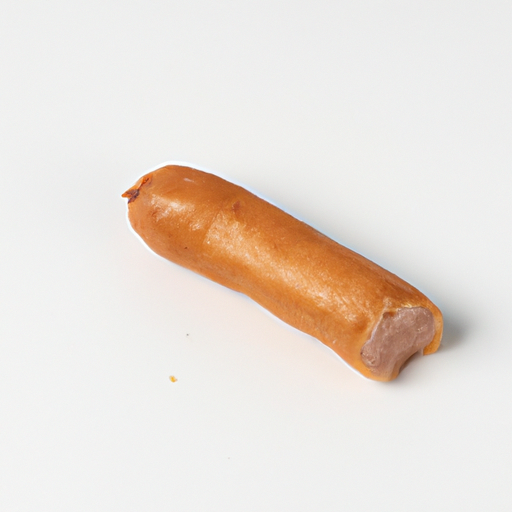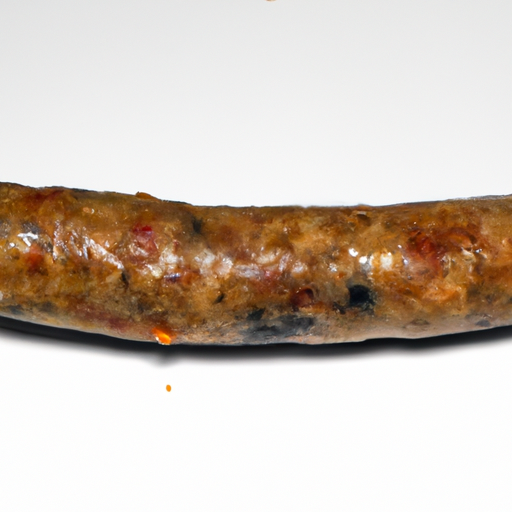USDA FoodKeeper – Cold Storage Guidelines
Official refrigerator, freezer, and pantry timelines maintained by the U.S. Department of Agriculture.
Visit USDA FoodKeeperLeftover cooked sausage can be a delicious and convenient addition to your meals, but it’s essential to handle it with care. With a shelf life of just three days in the fridge, keeping an eye on safety is key to enjoying those flavorful bites without worry. Remember, even after a few days, it’s best to be cautious and discard any that linger too long!
"Leftover sausages should be refrigerated within 2 hours of cooking at a temperature of 40°F or below and consumed within 3-4 days for optimal food safety, according to FDA guidelines."


Fridge
Between 32°F (0°C) and 40°F (4°C)
Store in an airtight container to maintain freshness.
3 days
90 days
Unpleasant odor, slimy texture, discoloration
Great for adding flavor to pasta dishes or omelets
Can be substituted with other cooked meats like chicken or beef
Sausage Cooked Leftovers typically start to degrade in quality after 3-4 days in the refrigerator. While they may remain safe to eat for up to a week if stored correctly, their taste and texture may deteriorate over time. It's important to differentiate between the expiration date for safety concerns and the best quality date for optimal taste and freshness.
To determine if cooked sausage leftovers have gone bad, look for any mold growth, an off smell like a sour or rancid odor, or a slimy or sticky texture. If you observe any of these signs, it's best to discard the sausage to avoid potential foodborne illness.
Consuming improperly stored or reheated Sausage Cooked Leftovers can pose risks of bacterial contamination such as Salmonella or Listeria. To prevent foodborne illnesses, ensure leftovers are promptly refrigerated, reheated to proper internal temperatures, and consumed within recommended time frames. High-risk scenarios include leaving cooked sausages at room temperature for extended periods or reheating multiple times.
For optimal storage of Sausage Cooked Leftovers, place them in airtight containers or resealable bags to maintain freshness and prevent cross-contamination. Store them in the coldest part of the refrigerator to slow bacterial growth. To reheat, ensure the sausage reaches an internal temperature of 165°F (74°C) to kill any harmful bacteria. Consider slicing the sausages before reheating to ensure even heating.
Sausages have a rich history dating back to ancient civilizations like the Romans and Greeks. Different cultures have their unique variations of sausages, incorporating diverse spices and meats. In many European countries, sausages hold cultural significance and are often enjoyed during festivals and celebrations. Fun fact: The world's longest sausage was over 36 miles long, created in Kitchener, Ontario, Canada.
If Sausage Cooked Leftovers have been refrigerated for 4 days, they are likely safe to eat within 3 days after the expiry date. However, always check for any signs of spoilage such as off smells, sliminess, or discoloration before consuming. If in doubt, it's best to discard them to prevent food poisoning.
Leaving Sausage Cooked Leftovers at room temperature for an extended period can lead to bacterial growth and contamination. If exposed for more than 2 hours, the safety of the leftovers may be compromised. It's advisable to promptly refrigerate them to maintain freshness and reduce the risk of foodborne illnesses.
When frozen, Sausage Cooked Leftovers may experience a slight change in texture once thawed. Freezing can cause moisture loss, potentially affecting the overall quality of the sausage. To minimize texture changes, consider reheating the thawed leftovers slowly and at a lower temperature to retain moisture and prevent excessive drying out.
The shelf life of Sausage Cooked Leftovers can vary slightly between different brands due to variations in ingredients, preservatives, and manufacturing processes. It's essential to check the expiration date on the packaging and follow storage guidelines provided by the specific brand to ensure the best quality and safety of the leftovers.
Cooking Sausage Cooked Leftovers can extend their shelf life by killing harmful bacteria and pathogens present in the meat. Proper cooking techniques, such as reaching the recommended internal temperature, can help increase the safety and longevity of the leftovers. However, it's crucial to store the cooked sausage properly to maintain its freshness and prevent contamination.
Sausage Cooked Leftovers typically have a shorter shelf life in warmer temperatures like summer due to increased bacterial growth. During hot weather, it's essential to refrigerate leftovers promptly and consume them within the recommended time frame to reduce the risk of food spoilage and foodborne illnesses. In colder temperatures, such as winter, leftovers may last slightly longer if stored correctly.
When transporting Sausage Cooked Leftovers for a 3-hour road trip, it's crucial to keep them at a safe temperature below 40°F (4°C) to prevent bacterial growth. Use insulated coolers or ice packs to maintain the cold chain during transportation. Ensure the leftovers are securely sealed in leak-proof containers to avoid cross-contamination with other foods. Upon arrival, reheat the sausages to the proper internal temperature before consumption.
Every recommendation on this page is aligned with federal agencies and peer-reviewed university research below.
Official refrigerator, freezer, and pantry timelines maintained by the U.S. Department of Agriculture.
Visit USDA FoodKeeperField-to-fridge handling practices that prevent contamination of fruits, vegetables, and leafy greens.
Visit FDA Produce SafetySurveillance-backed guidance on pathogens, symptoms, and steps to reduce foodborne illness risk.
Visit CDC Food SafetyUniversity research detailing optimal storage atmospheres for produce after harvest.
Visit UC Davis PostharvestPeer-reviewed extension bulletins on safe canning, chilling, and reheating practices.
Visit Penn State ExtensionNeed deeper reading? Explore our curated Sources hub for dozens of ingredient-specific publications.
Scan your food directly and get instant safety info using our AI-powered camera feature.
Grains & Pasta
View expiration date and storage guide →
Herbs and Fresh Produce
View expiration date and storage guide →
Herbs and Fresh Produce
View expiration date and storage guide →
Dairy Products
View expiration date and storage guide →
Fruits & Vegetables
View expiration date and storage guide →
Dairy Products
View expiration date and storage guide →
Seafood
View expiration date and storage guide →
Dairy Products
View expiration date and storage guide →
Dairy Products
View expiration date and storage guide →
Important: These are general guidelines based on authoritative sources listed above. Always use your best judgment and when in doubt, throw it out. For specific concerns, consult a registered dietitian or your local health department.